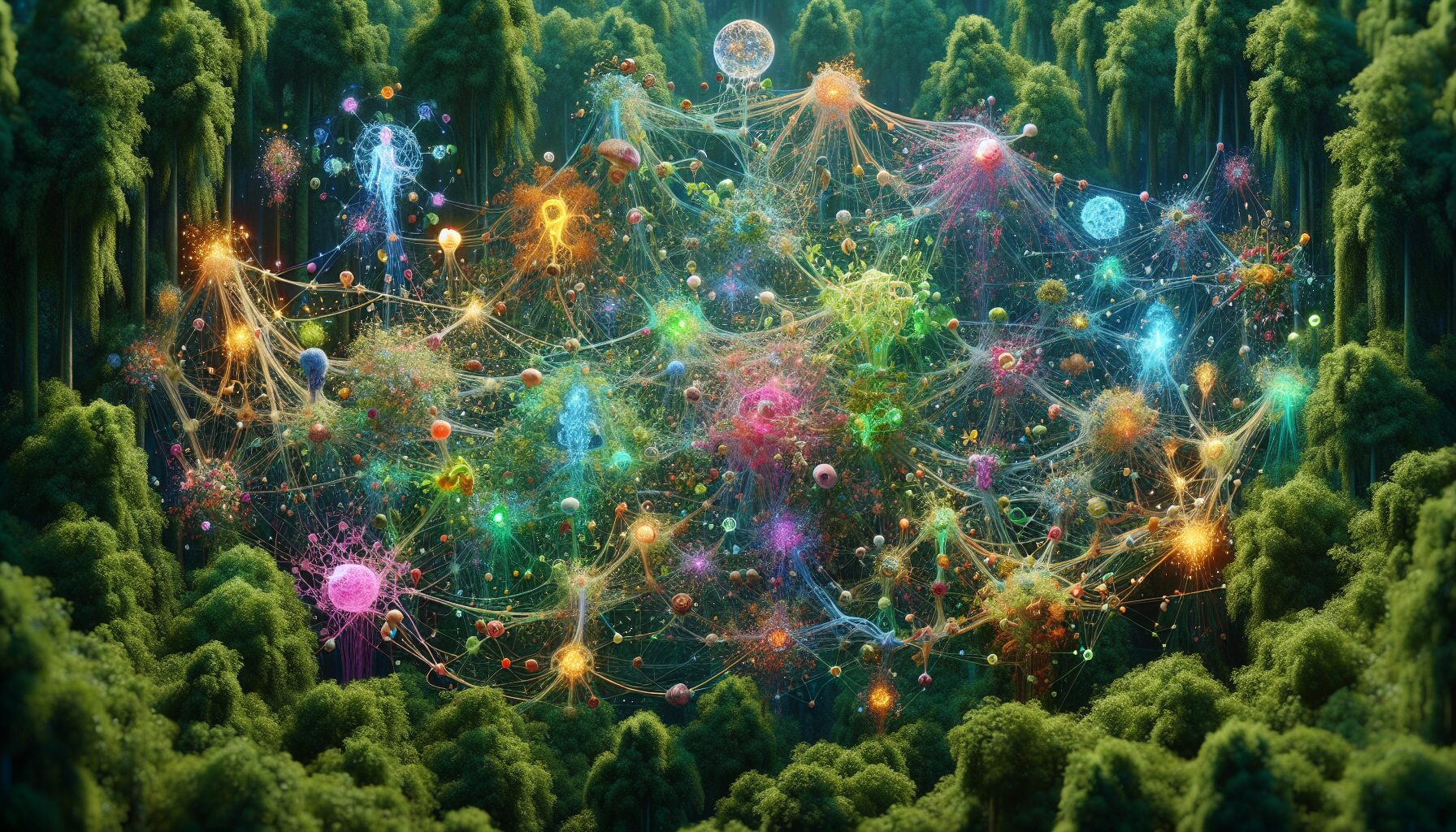Deep within the heart of the forest, beneath the towering canopies and the whispering leaves, lies a hidden network that defies the traditional anthropocentric view of nature. This network, the mycelial matrix, is a complex and ancient web of fungal threads that connect life in a unique form of animism, suggesting a world far beyond human-centered perspectives.
Mycelium, the vegetative part of fungi, extends in a delicate yet robust network that plays a crucial role in forest ecosystems. These networks facilitate communication between trees, enabling a form of interspecies communication that challenges our understanding of intelligence and consciousness. As Smithsonian Magazine describes, “The mycelium acts as a kind of underground internet, linking the roots of different plants and trees and allowing them to share nutrients and information.”
Animism in the Modern World
Animism, the belief that objects, places, and creatures all possess a distinct spiritual essence, is not new. However, the recognition of mycelium as a medium for animistic connection is a modern interpretation that invites us to reconsider our place in the natural world. In this view, the forest becomes a living entity, a tapestry of interconnected spirits and energies.
“In animistic cultures, the forest is not just a resource but a community of beings, each with its own role and purpose,” explains anthropologist Graham Harvey. “The trees, the fungi, the animals—all are seen as part of a greater whole.”
Beyond Anthropocentrism
This perspective pushes us beyond anthropocentrism, urging humanity to see itself as part of an intricate web of life rather than the dominant force. The mycelial matrix serves as a metaphor for this interconnectedness, where each strand is vital to the whole. This holistic view is echoed by Paul Stamets, a renowned mycologist, who argues that “fungi can help save the world,” emphasizing their indispensable role in ecological balance.
- Communication: Trees and plants communicate through mycelium, sharing resources and warning each other of dangers like pest infestations.
- Recycling: Fungi decompose organic matter, recycling nutrients back into the soil and sustaining life.
- Symbiosis: Mycorrhizal relationships between fungi and plant roots enhance nutrient uptake and promote health.
As we delve deeper into the mysteries of the mycelial matrix, we are invited to see the forest not just as a backdrop for human activity, but as a dynamic and sentient network. In embracing this vision, we take a step towards a more harmonious and sustainable relationship with the natural world.

Comments